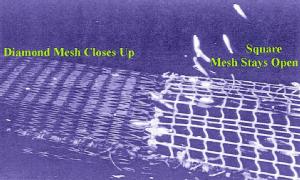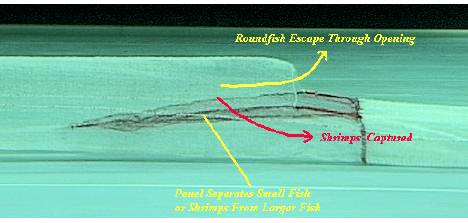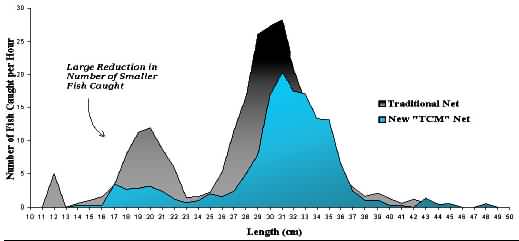| 2002 |

|
YEAR BOOK |
INSTITUTE OF TECHNOLOGY TRALEE
|
Dingle fishermen conserve their inshore fish stocks
– TCMs a way forward
|

The Irish are leading the way within the EU in fisheries conservation through the development of what are called Technical Conservation Measures (TCMs). TCMs, such as selective fishing gear, can be used to support sustainable harvesting of fishery resources. An intensive R&D project aimed at refining the use of selective fishing trawls, led by Bórd Iascaigh Mhara (BIM) through its Inshore Fisheries Development Initiative, is currently underway in Dingle under the direction of Lorcán Ó Cinnéide. The Institute of Technology, Tralee (ITT) has also initiated a Masters research project that supports and compliments this BIM research. The joint project is very much industry driven and involves a high degree of co-operation between fishermen, BIM, ITT and the Marine Institute (MI). It is aimed at providing solutions to the problem of discards through TCMs. BIM funding of €200,000, the Technology Sector Research Strand 1 grant of €30,000 to ITT, along with some MI funding and fisheries expertise, has allowed the research team to put together a highly industry relevant and scientifically based research programme.
BIM and the Dingle Inshore Fisheries Development Committee have joined forces with ITT, where Tony Holmes, a Masters research student, leads a team of observers in fishing gear trials. The Kerry based trawlers involved – Elsie Marie, Floralie, Deux Orchidees, Naomh Deararca, Maid of Nazerath and Gerlisa – are using fishing gear which incorporates a variety of TCMs, appropriate to the size and horse power of each vessel. Two of the vessels have square-mesh escape panels incorporated in their nets. A further two have large-mesh cod-ends attached to their nets, and one operates a separator trawl. The sixth vessel has a net made entirely of a larger than normal mesh. All of these net systems are designed to provide a means of escape for juvenile fish and so minimise discards.


The project is an excellent example of partnership between an industry sector and R&D agencies. By collaborating to address a real practical problem through a research project that is executed in an industrial setting, the scientific approach is demystified. When the results that emerge are of immediate commercial relevance, this only helps to prove that marine research has a very important role in the future of commercial fisheries in Ireland.
Contact: Lorcán Ó Cinnéide, BIM PO Box 12, Crofton Rd, Dun Laoghaire. Co Dublin;
Tel: 066-9150909;E-mail: [email protected] ;
Noel Mulligan, Institute of Technology, Tralee, Co Kerry;
Tel: 066-71456226; E-mail: [email protected] ;
Rick Officer, Marine Institute, Fisheries Research Centre,
Abbotstown, Co. Dublin; Tel: 01-8228200;
E-mail: [email protected]